Centro Tradicional del Hanji en Jeonju (전주전통한지원)
4.4Km 2024-04-07
Hanji-gil 100-10, Wansan-gu, Jeonju-si, Jeonbuk-do
Jeonju ha sido el mayor productor de papel tradicional hanji durante más de cien años. Aún mantiene esta orgullosa tradición y el Centro Tradicional del Hanji pretende preservar las técnicas tradicionales de fabricación de papel y ser el centro de la industria del hanji. Más del 80 por ciento del papel producido en el centro es exportado a Japón, y el resto se usa en Corea. El centro produce, expone y vende hanji para caligrafía, pinturas orientales y otros elementos artesanales.
Gaeunchae 2 (가은채2)
4.4Km 2025-07-18
100-20, Hanji-gil, Wansan-gu, Jeonju-si, Jeonbuk-do
Gaeunchae 2 is the sister hanok of Gaeunchae in Jeonju Hanok Village, Jeonbuk-do. It’s a traditional red clay-walled hanok with ondol underfloor heating, exposed roof beams and hanji wallpaper and flooring - creating a beautiful and distinctive hanok interior. It has a small hallway which is good for storing luggage or just to sit and chat. In the garden are sculpted stone lanterns and tigers. Local attractions such as Jeondong Cathedral and Gyeonggijeon Shrine are a short walk away.
Aldea Tradicional de Jeonju (Cittaslow) (전북 전주 한옥마을 [슬로시티])
4.4Km 2025-07-09
Girin-daero 99, Wansan-gu, Jeonju-si, Jeonbuk-do.
La Aldea Tradicional de Jeonju (Hanok Maeul) está ubicada en las zonas de Pungnam-dong y Gyo-dong. En esta área se encuentran concentradas aproximadamente 800 casas tradicionales de Corea, las hanok. Este lugar es famoso por conservar intacto el estilo tradicional, proporcionando la oportunidad de disfrutar el ambiente antiguo y folclórico del país.
Lo más elegante de esta aldea es seguramente el estilo de los techos de las hanok. La peculiaridad de esta vivienda es que el borde de los techos está ligeramente dirigido hacia el cielo. La estructura de estas casas se divide en dos secciones: anchae y sarangchae. Anchae, siendo el lugar donde permanecen las mujeres, también es llamado gyusubang; mientras que el sarangchae es el lugar utilizado por los hombres, también llamado seonbibang. La construcción arquitectónica diferencia el sector destinado a los hombres y mujeres. De tal manera, el anchae, por ser el lugar donde residen las mujeres, se localiza en la parte más resguardada y silenciosa de la casa.
Otra característica es que los cuartos son de ondol, un sistema de calefacción instalado en el suelo. La estructura del ondol es bastante simple, consiste en aplicar el sistema de calefacción debajo del piso, con pasajes horizontales para el humo y una chimenea vertical para el escape. Una de las grandes ventajas es que en verano es fresco y en invierno, caliente.
Además de los recorridos, observando la sabiduría y las costumbres tradicionales de la antigüedad, otro de los atractivos lo componen las actividades culturales que consisten en experimentar las habitaciones de ondol y degustar del plato típico famoso de la ciudad, el bibimbap (arroz mezclado con surtido de vegetales).
Pabellón Cheongyeonru del Puente Namcheongyo (남천교 청연루)
4.4Km 2024-04-06
Cheongyeong-ro 40, Wansan-gu, Jeonju-si, Jeonbuk-do
El puente Namcheongyo es el puente principal que conduce a la Aldea Tradicional de Gyo-dong de Jeonju desde el barrio de Seohak-dong de la ciudad de Jeonju. A través de un importante proyecto de regeneración urbana, toda el área del puente Namcheongyo tuvo una renovación que mejoró la infraestructura disponible, agregando incluso el pabellón Cheongyeonru al puente. Los visitantes pueden disfrutar de una vista panorámica de la zona desde este pabellón de estilo tradicional hanok y al mismo tiempo refugiarse del sol en un día caluroso.
Yangsajae (문화공간 양사재)
4.5Km 2025-11-28
40, Omokdae-gil, Wansan-gu, Jeonju-si, Jeonbuk-do
Omokdae e Imokdae (오목대와 이목대)
4.5Km 2025-07-10
Girin-daero 55, Wansan-gu, Jeonju-si, Jeonbuk-do.
Omokdae está situado en la cima de una colina y se trata de uno de los lugares donde Yi Seong-gye (quien se convirtiera más tarde en el rey Taejo, el primero de la dinastía Joseon) hizo una parada para celebrar su victoria de camino a casa tras la guerra contra los invasores japoneses, al final de la era Goryeo. Enfrente de Omokdae está Imokdae, situado cerca de los pies del monte Seungamsan, donde se encuentra Chimyeongjasan, un monumento católico. En este lugar, Mokjo (antepasado del rey Taejo) solía jugar con sus amigos a representar guerras de niño, una acción muy simple que aparecería después en 'Yongbieocheonga', una balada del siglo XV que narra los logros culturales de la nación.
Jeonggahanog / 정가한옥
4.5Km 2025-03-05
78-3, Girin-daero, Wansan-gu, Jeonju-si, Jeonbuk-do
+82-10-9934-1300
Jeongga Hanok is a space where the traditional beauty of hanok and the modern comfort co-exists. The newly built Hanok is neat and pleasant. When you enter the small cobbled yard, the porch and the eaves will welcome you, and you’ll find that the rooms are filled with delicate wood fragrance. The interior is furnished with Korean cypress trees and red clay. In particular, the Cypress Tree room is all made of cypress trees, from the walls to the ceiling, making guests feel like they are lying in a forest. Maple Room and Ginkgo Tree Room, meanwhile, have attics.
Jeongga Hanok faces Jeonju Hanok Village with the Girin-daero in the middle. Hanok Village is just across the road. Major attractions such as Gyeonggijeon, Jeondong Catholic Cathedral, and Jeonjuhyanggyo Confucian School are all within walkable distance. Omokdae, which offers an unhindered view of Hanok Village, is located over the pedestrian overpass. Jaman Mural Village, famous for colorful mural and cozy cafes, is about 300 meters away and a great spot for selfie lovers.
2521 (이오이일)
4.6Km 2025-07-17
5-19, Omokdae-gil, Wansan-gu, Jeonju-si, Jeonbuk-do
Bu Yong Heon (부용헌)
4.6Km 2025-06-17
149-3, Hyanggyo-gil, Wansan-gu, Jeonju-si, Jeonbuk-do
Buyongheon is located in Jeonju Hanok Village. Precisely speaking, Buyongheon is the very next door to Jeonju Hyanggyo (Confucian Temple and School). Across the alley are Jeonju Hyanggyo Culture Center and Wanpanbon Culture Center. If you walk a few more steps, you will reach Jeonju Hanbyeok Culture Center where you can see various performances and experience the culture and foods of Jeonju. Omokdae can be seen from the garden of Buyongheon. Across the Jeonjucheon Stream is the National Intangible Heritage Center.
The beginning of Buyongheon is deeply related with Jeonju Hyanggyo. In around 1935, the local bureaucrats lived around the Hyanggyo after building 12 houses one after another. Most of them came from rich families. These collective houses were called Buyong Houses, which meant rich houses. The name Buyongheon originated from Buyong Houses. The rooms of Buyongheon are composed of Toenmaru Bang, Daecheong Maru Bang, Large Daecheong Maru Bang and Big Sarangchae. The interior of the rooms looks neat with the beauty of blank space as they excluded unnecessary decorations. Carefully prepared breakfast is served upon request made in advance. Visitors can also experience traditional culture such as traditional etiquette education and Korean paper art.
In fall, the yellow leaves of the ginkgo tree in the garden of Jeonju Hyanggyo lights up the roof of Buyongheon. It is recommendable to walk along the Jeonjucheon Stream and take pictures of the colorful murals and the cafes in the Jaman Mural Village located on the left sie of the Hanok Village. It takes 15 minutes from Jeonju Station and 10 minutes from Jeonjuu Express Bus Terminal to Buyongheon by taxi.
Galería de Murales de la Aldea Jaman (자만마을 벽화갤러리)
4.7Km 2025-07-10
Gyo-dong, Wansan-gu, Jeonju-si, Jeonbuk-do
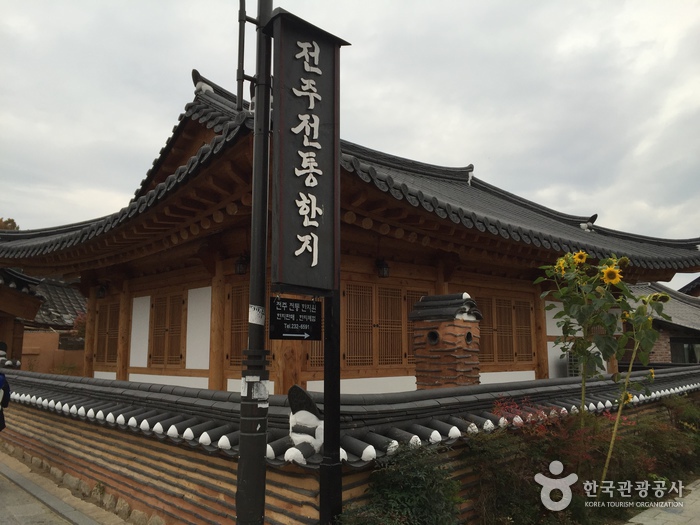
![Aldea Tradicional de Jeonju (Cittaslow) (전북 전주 한옥마을 [슬로시티])](http://tong.visitkorea.or.kr/cms/resource/50/3479250_image2_1.jpg)
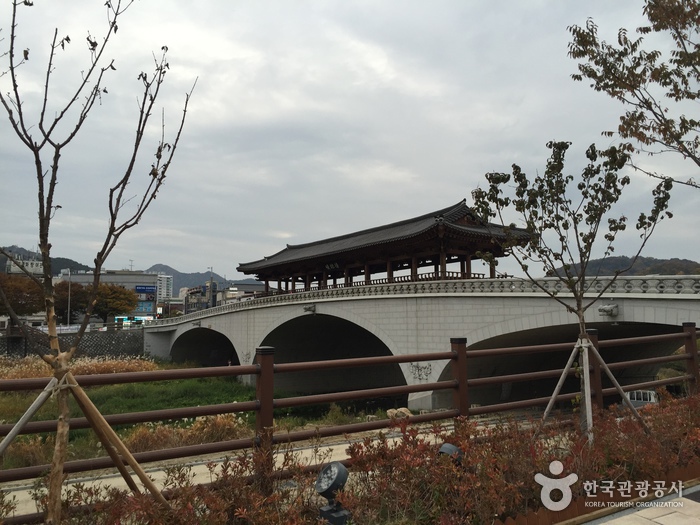
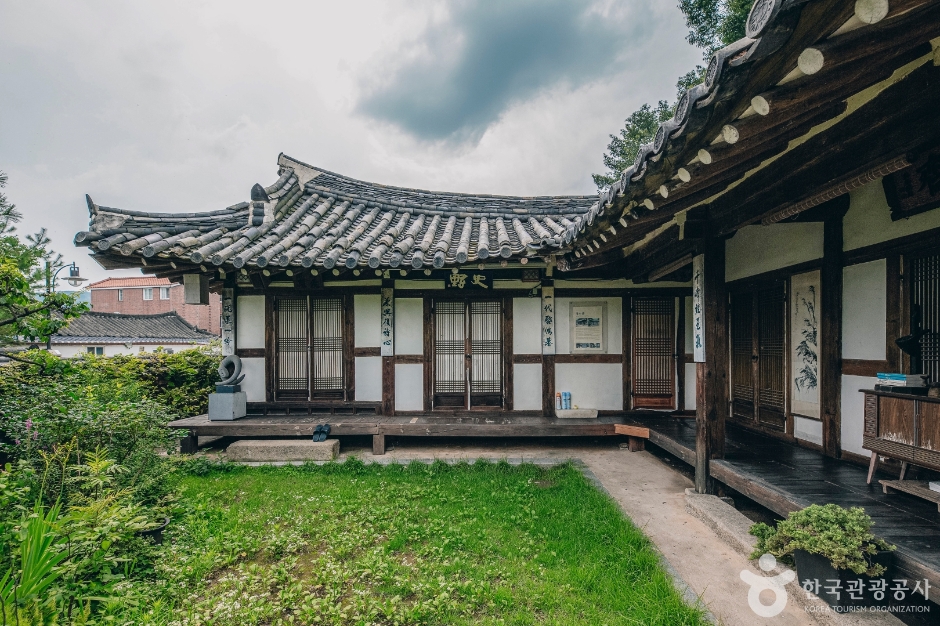

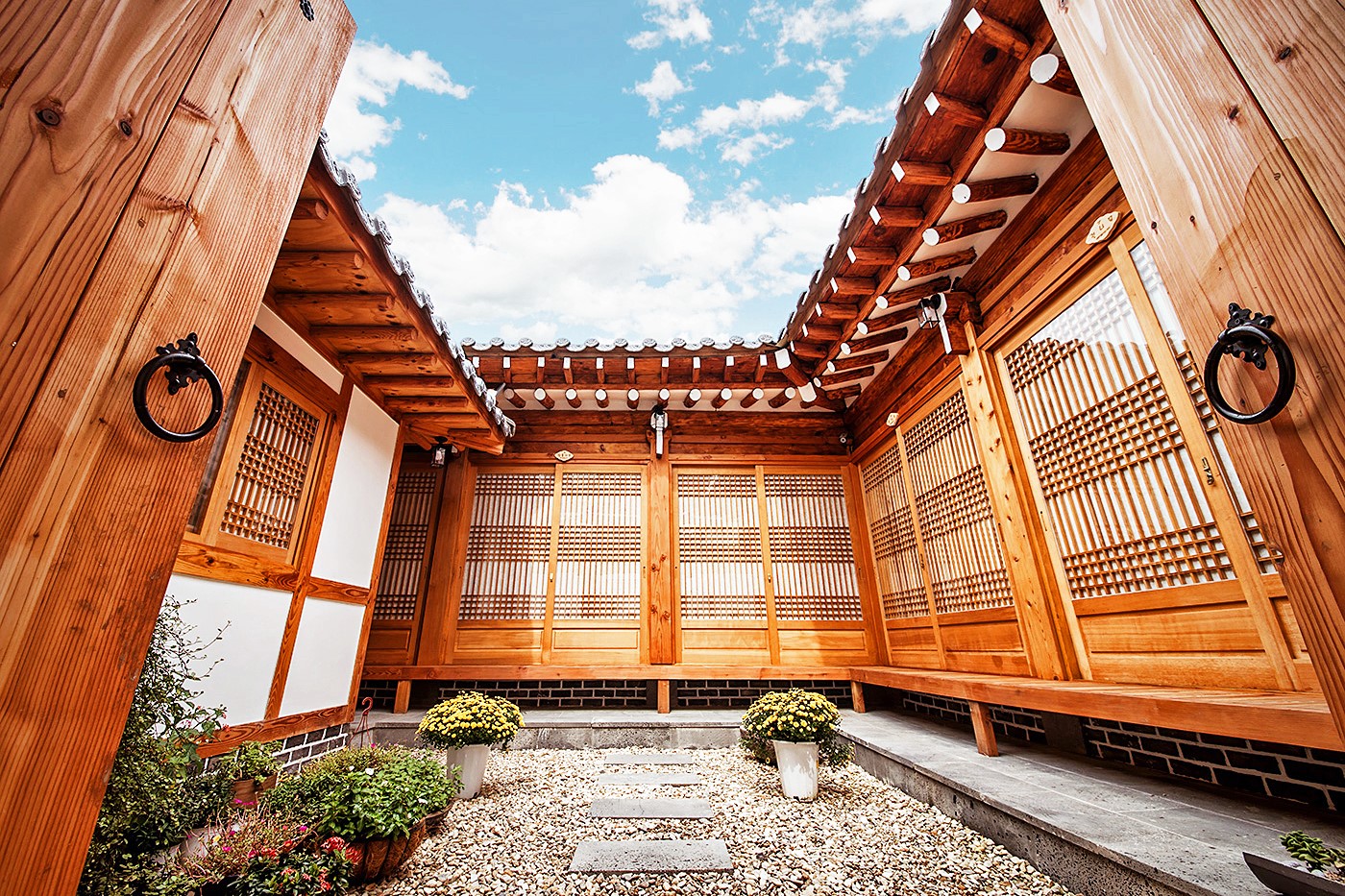


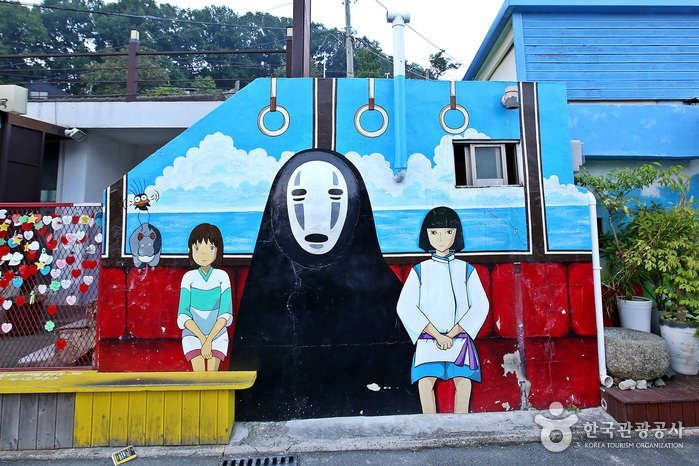
 Español
Español
 한국어
한국어 English
English 日本語
日本語 中文(简体)
中文(简体) Deutsch
Deutsch Français
Français Русский
Русский